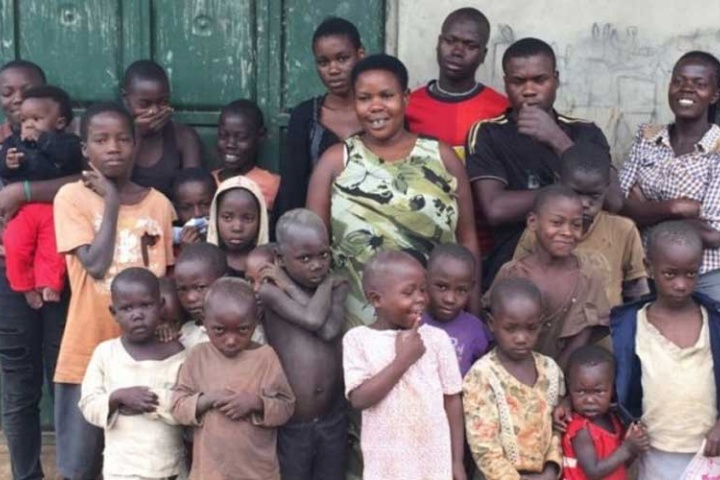The journey walked by women, Civil Society Organizations, human rights treaties, international laws bodies and governments, and persons of interests to realize sexual and reproductive health and rights has been long and mucky, flawed by threats and controversies mostly for its relating landscapes of interest such as politics, economies, religions, cultures and taboos, and demographics. It has also presented strengths and opportunities towards realization of women’s human’s rights. Thus, looking at sexual reproductive health and rights as a creation of history rather than timeless givens creates opportunities to take stock of the covered milestones while identifying gaps for improvement.
Realization of sexual and reproductive health and rights has been an uphill task after the 1986 UN Terehen International Conference on Human Rights.
1968 UN Teheran International Conference on Human Rights gave sexual and reproductive health and rights another turn-population control was linked to human rights.
What are Sexual and Reproductive Health and Rights?
The United Nations Population Fund defines sexual and reproductive health and rights as a complete state of physical, mental and social well- being in all matters relating to the reproductive system. This implies people have safe and satisfying sex, capability to reproduce, and have the freedom to decide if, when and how often to. Sexual and reproductive health and rights also emphasizes on the need to access accurate information, safe, effective, affordable and acceptable contraceptive method of choice.
It further stretches to empowerment for women and girls to protect themselves from sexually transmitted diseases. Sexual reproductive health cannot be fully meaningful without access of some fundamental rights such as freedom from sexual violence, discrimination against women and girls and coercion. Lastly, sexual and reproductive health and rights encompasses the rights of women to access services to enable them have a safe pregnancy, delivery and health babies.
The Population Control Paradigm Shift! The 1954 Population Conference to the 1994 International Conference on Population and Development
Gender mainstreaming is an approach to policy making, that incorporate the needs, interests and concerns of men and women first introduced in 1985 at the Nairobi World Conference on Women. It was an approach to international gender equality policy through Beijing Platform for Action and has become a tool to promote gender equality at all levels.
A journey of thousand miles starts with a single step. First was the Conference on Population of Rome 1954 whose objective looked into discussing population in general terms not as a policy-the issues of population growth therefore were not conceptualized on the grounds of human rights-but as an independent capacity of demographers. In 1965, the Population Conference was held in Balgrade, a disturbing body of literature was bursting with population control ideas citing the world population was growing like a bush fire that would lead to mass starvation.
Most governments supported the idea of family planning agreeing to neo-Malthusian belief that population growth is the cause of poverty and a hindrance to development. In pursuit of population control women became victims of coercive practices such as forced abortions and social pressure to monitor and control individual fertility. The 1968 UN Teheran International Conference on Human Rights gave sexual and reproductive health and rights another turn-population control was linked to human rights.
The reason behind adopting to this resolution was better opportunities to enjoy human rights and living standards for all. Therefore, the Teheran International Conference on Human Rights demonstrated population as a problem in a manner so embryonic. It was later adopted by all population control paradigms as an affirmation that its possible to realize human rights while identifying gaps such as coercive and discriminatory practices.
The Bucharest Population Council- Birth of a New Model…
The abovementioned narrative brought a new twist- the first World Conference on Population where high-ranked government officials gathered to discuss a matter considered so sensitive-population and its relation to development. Following hard discussion by 137 UN member states, a Plan of Action was adopted (The World Population Plan of Action). Just a flashback- the Malthusian theory perceived “population issue” as a consequence not a cause of underdevelopment. They argued the distribution of resources was also an issue not the scarcity. This is the conference that hosted many undeveloped countries compared to the previous ones, bringing out a clear picture of human rights issues towards population and development.
Even in the 21st Century, women and girls in developing and least developed countries are tied to poverty which is one of the indicators of unrealised human rights
The World Population Plan of Action established three significant changes. Foremost, population policies must be consistent with human rights. Second, states must respect and guarantee citizens the right to determine the number of their children and spacing without discrimination and coercion, and access accurate information and services. Did the two recommendations outweigh the governments’ wish to control population? The provision of all couples and individuals was not in the original Bucharest Conference, although majority of the delegates were in its favour, others felt it was a way for the unmarried to access contraceptives. This was a perfect breather as the matter was put to vote-48 voters were in support, 41 against while 6 did not vote.
This affirmation has stood the test of time in the history of women’s human rights with efforts to change or revise it failing. Lastly, the World Population Plan of Action drew attention on the connectedness of the role played by women in population policies “equal status of men and women in the society improves the general quality of life”. In other words, “improvement status of women means contributing to family/society general welfare, the opportunity to have planned births and improved individual status”. United Nations Population Department 1974).
The best part of women’s rights is that they had a sunrise, and the sunset gets better everyday
They say the older the fiddle, the sweeter the tune. After the Bucharest Conference in 1974 feminist criticism of fertility control politics matured to a hot topic. During the 1975 International Women’s Year Conference in Mexico many women human rights organizations denounced coercive practises in contraceptive research, stating that reproductive rights are of bodily integrity and control. This was the beginning of many backs and forth deliberations, although finally it marked a turning point in policy directives on women’s issues. The second International Conference on Population took place in Mexico City in 1984 where UN member states adopted Recommendations for Further Implementation of World Population Plan of Action. Members categorically confirmed on the significance of human rights in population control.
Abortion came into limelight in the 1200BC, and is still a human rights debates even with ” No Law Can End Abortion”.
However, it could not just be without abortion and coercive practises such as sterilization sparking the controversies to achieve demographic population targets. The Recommendations of World Population Plan of Action was without doubts a reflection of human rights approach. In tandem, abortion and coercive practises were an eye opener if really the international commitment and possible political will of states to implement Recommendation 30 and 31 respectively. Recommendation 31 demands that all legislations and policies concerning family incentives and disincentives must be consistent with internationally recognized human rights, and should neither be discriminatory nor coercive.
America’s reception of abortion and coercive practices was cold, turning it into the mantra “abortion is not a family planning method” that continued to be an international agenda decade after decade. The Pro-life movement of 1973 became a universal reproductive politics. America’s then President Charles Reagan, made it clear only foreign NGOs without intents of promoting abortion as a family planning method would access the federal family planning funds.

Miriam Natabanzi from Uganda, married at 12 years and a mother of 44 children-6twins, 4 sets of triplets, 3sets of quadruplets and 2 singletons. Miriam Natabanzi is known as Mama Uganda and the world’s most fertile woman.
6 twins, 4 sets of triplets, 3 sets of quadruplets, and only 2 children were born without a “copy.” There were also another 6 that passed away. Mariam
Nevertheless, legalized abortion as “legal and safe abortion” according Swedish delegate was met by disagreements. Recommendation 18(e) of World Population Plan of Action states “To take appropriate action to help women avoid abortion, which in no case should be considered a family planning method (UN Second Conference on Population). China’s one child policy became a thorn in the flesh for the conference. Not only had it gain international attention but also undermined the concept of family planning as a human right accepted in the Bucharest Population Council.
So far, condom use and vasectomy are the only male family planning options. Majority of men have declined to adhere to. The burden of contraception use / family planning is almost entirely for women.
The role of men in family planning was not also left out. Paragraph 7 of the World Population Plan for Action Recommendation is clear “In order to provide women the freedom to participate fully in the life of society, it is equally necessary for men to share with women responsibilities in family planning, child bearing and other family life aspects.” The question in my at this point is, have men honoured the recommendation? It is a crucial statement especially for success of women controlling reproduction while attaining other potentials fully. There were concerns on the population control paradigm though that have shaped the landscape of woman women rights to date, its overriding of women’s reproduction, in that
–Was it a polite manner of overlooking other structural issues
– Was it a way to experiment with women’s bodies for population targets
–Why the constistency towards birth control rather than a sexual and reproductive and health rights
The outcome? Gender neutralism where other women’s sexual and reproductive health and rights were ignored. Women’s organizations rised their dissatisfaction with the argument the population control approach definition made women factors and not actors. Cook in his book, Reproductive Health and Human Rights (2003), asserts women were beneficiaries, while they were not at the centre, they were objects not subjects. The approach focused on the poor women but failed to address social inequality. This largely birthed for women rights movements/ organizations to call for health care, mass education, women emancipation and resource allocation.
Quote of the month,
” Where, after all, do universal human rights begin? In small places, close to home-so close and so small that they cannot be seen on any maps of the world. Yet they are the world of the individual person; the neighbourhood he lives in, the school or college he attends, the factory farm, or the office he works in. such are the places where every man, woman, and child seeks equal justice, equal opportunity, equal dignity without discrimination. Unless these rights have meaning there, they have little meaning anywhere”. Eleanor Roosevelt, 1958
